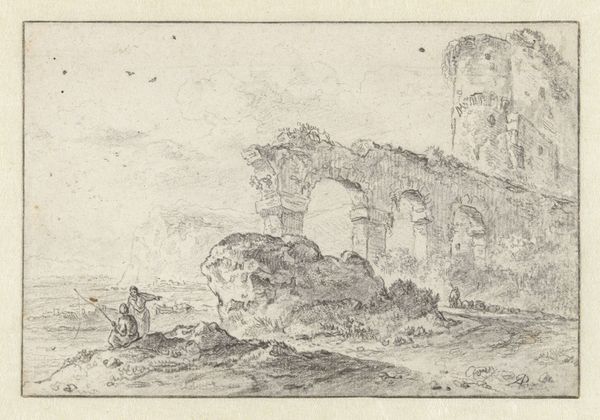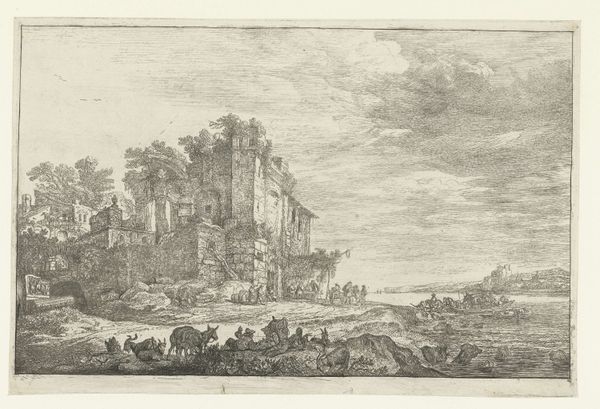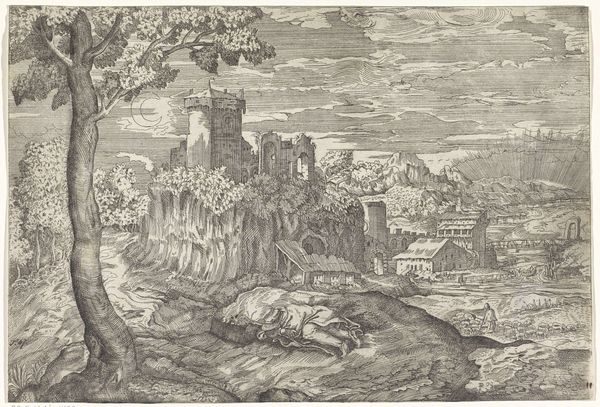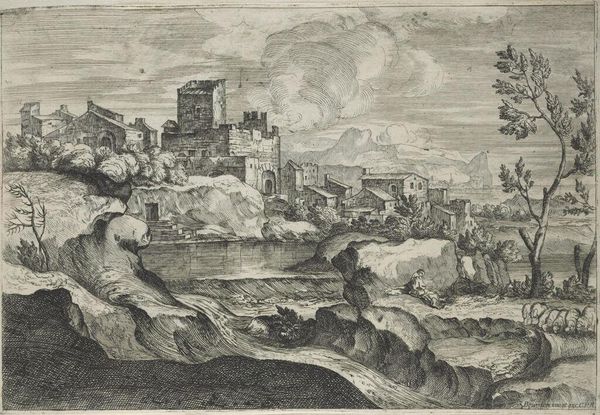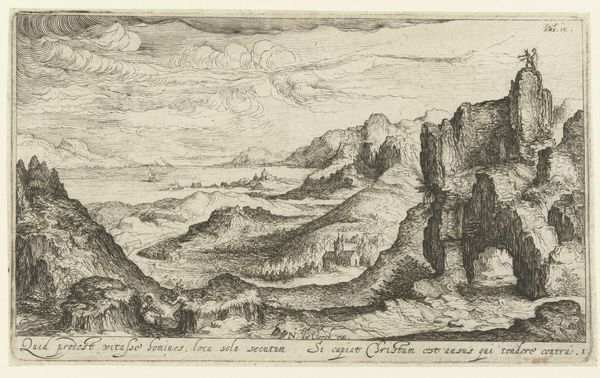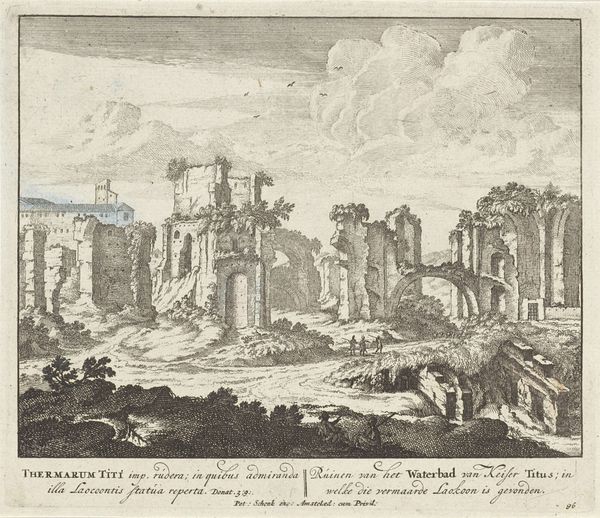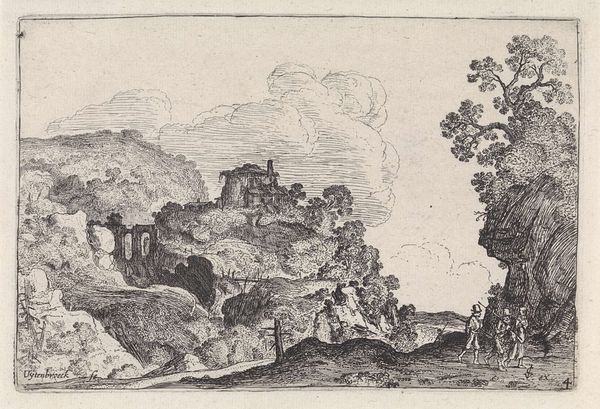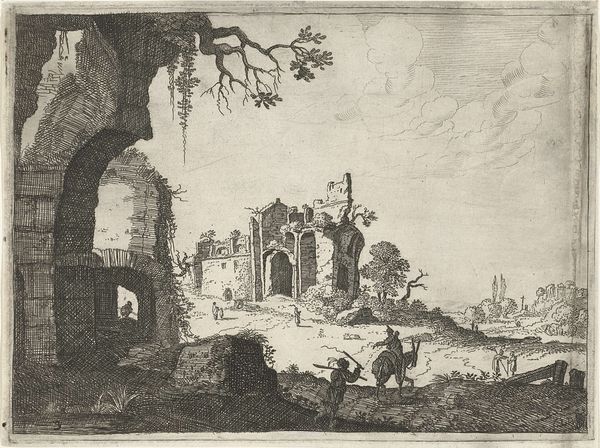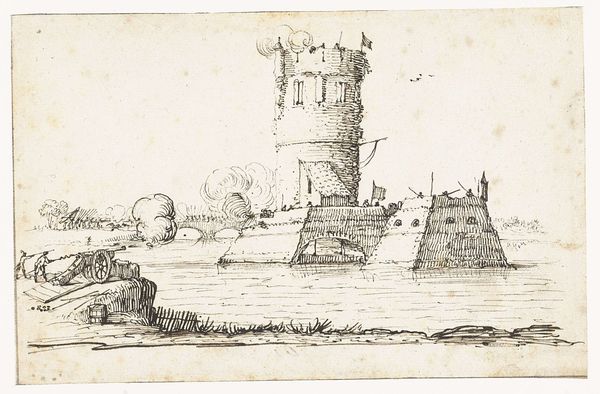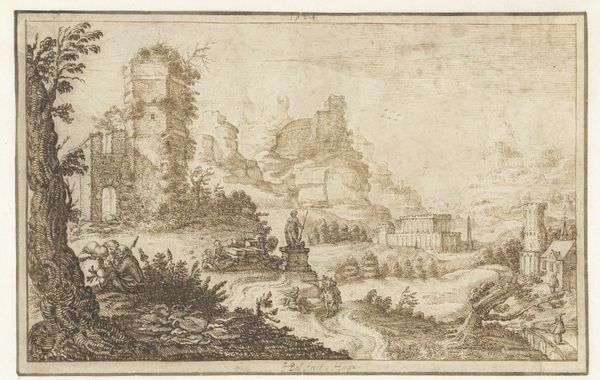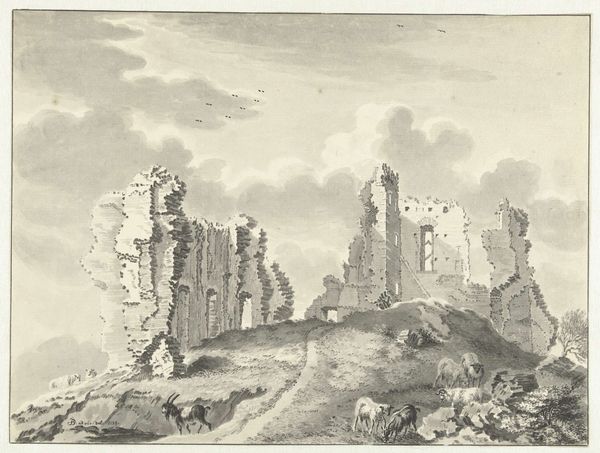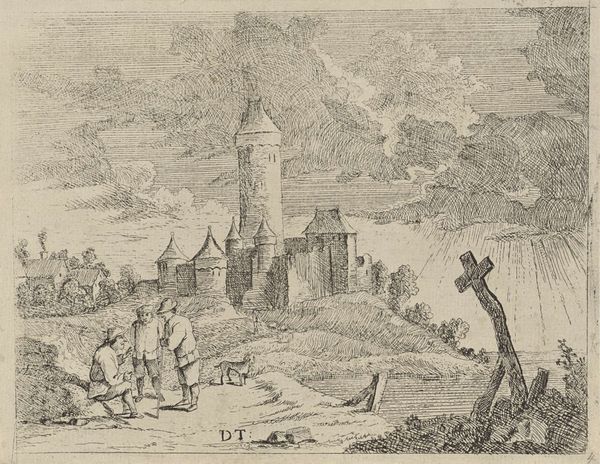
#
quirky sketch
#
mechanical pen drawing
#
pen sketch
#
old engraving style
#
personal sketchbook
#
sketchwork
#
pen-ink sketch
#
pen work
#
sketchbook drawing
#
initial sketch
Dimensions: height 153 mm, width 253 mm
Copyright: Rijks Museum: Open Domain
Curator: Let’s take a look at this evocative etching, "Het slot bij Breukelen, verwoest door de Fransen in 1672," or "The Castle at Breukelen, Destroyed by the French in 1672," made between 1672 and 1676, by Isaac Sorious, here at the Rijksmuseum. Editor: It's a grim scene. The skeletal remains of a castle loom over a desolate landscape. The line work, while detailed, gives it an unsettling, almost ghostly quality. Curator: Indeed. The image encapsulates the devastation wrought by the Franco-Dutch War. Sorious, through this work, seems to be engaging with a crucial political moment, turning it into a lasting image of loss and resilience. It reflects the public trauma of the time. Editor: It's interesting how he's chosen to depict the ruins. Notice the way the crumbling brickwork is rendered? The labor involved in building that castle, all that material investment, reduced to rubble by warfare. The contrast between construction and destruction is starkly material here. Curator: Precisely. The etching allows Sorious to directly comment on the ravages of war and the shifting power dynamics within the Netherlands at the time. The demolished castle serves as a symbol of vulnerability and the cost of conflict. Editor: And the oxen in the foreground, oblivious to the history behind them, are just…present. Their existence, their material presence, highlights the absurdity of war, doesn’t it? All that human conflict set against the indifference of the animal world. Curator: Absolutely. The inclusion of these pastoral elements perhaps suggests a hope for renewal amidst the destruction, the cycle of life continuing regardless of political turmoil. A kind of propaganda, if you will. Editor: The etching feels like a document, but it's also intensely aesthetic. The craft of printmaking, that iterative process, allows for a wide distribution of these images, making the castle's ruin both spectacle and cautionary tale. Curator: It is powerful how art could act as a mirror, reflecting not only the physical realities of destruction but also the socio-political anxieties of a nation facing war. Editor: Yes, and when looking closely, it’s also about the very tangible result of those political and social actions in its basic physical makeup – the crumbled brick, the water, the ink, and paper. All become powerful symbols of their moment.
Comments
No comments
Be the first to comment and join the conversation on the ultimate creative platform.

